
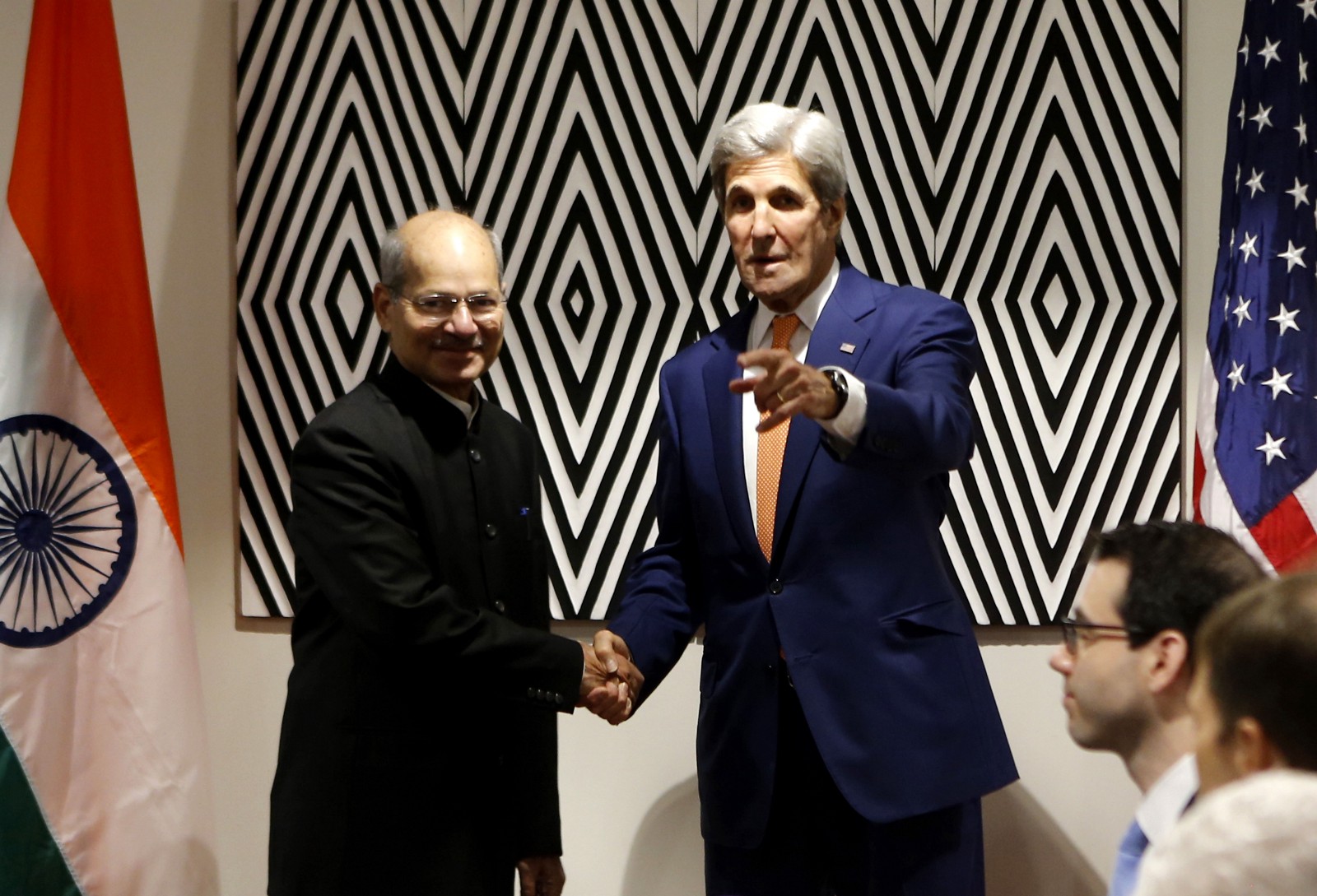
(Photo: Cyril Ndegeya/AFP/Getty Images)
After a whirlwind ratification process, the Paris Agreement went into effect on October 5th, less than a year after it was announced — a sign of the current momentum for climate action around the globe. President Barack Obama heralded the milestone as a “historic day” in a statement from the Rose Garden.
“Today the world meets the moment, and if we follow through on the commitments that this Paris Agreement embodies, history may well judge it as a turning point for our planet,” Obama said.
If we follow through. That “if” concedes the yawning gap between the world’s climate aspirations, and the practical realities of climate action. For the past year, nations have worked furiously to complete the specific domestic processes necessary to ratify the agreement as quickly as possible — inarguably a critical step toward action. Now comes the hard work of figuring out how each nation will live up to the promises they’ve made to limit warming to less than two degrees Celsius. Nations will need to turn their (by-definition vague) Intended Nationally Determined Contributions into implementable plans.
“We have a long-term goal, we have mechanisms by which those implementation plans can be generated,” says Taryn Fransen, project director of the World Resources Institute’s Open Climate Network. “But we’re not yet to the point where most countries have really fleshed out what that looks like.”
The murky nature of these plans has led many climate observers to question whether the celebration over the Paris Agreement has been premature or overzealous. Former National Aeronautics and Space Administration scientist James Hansen called the agreement “worthless words” last year after it was announced in Paris. And many experts admit that a gap exists between what many countries have pledged and what they are currently capable of doing.
“It’s a lot of talk,” says Christoffer Klyve, director of the climate and environment department for Future in our Hands, a Norwegian sustainability non-profit. “It’s the right kind of talk, but when you hold it up against what each country has both the plans to do, and the capacity to do, and the skill to do, there’s a big gap in many countries.”
Closing that gap, and figuring out how to turn those words into actionable policies and programs will be a major focus of the upcoming COP22 meeting in Marrakech, Morocco. Here’s a look at where some major and minor players stand.
NORWAY: A Climate Leader With a Fossil-Fuel Problem
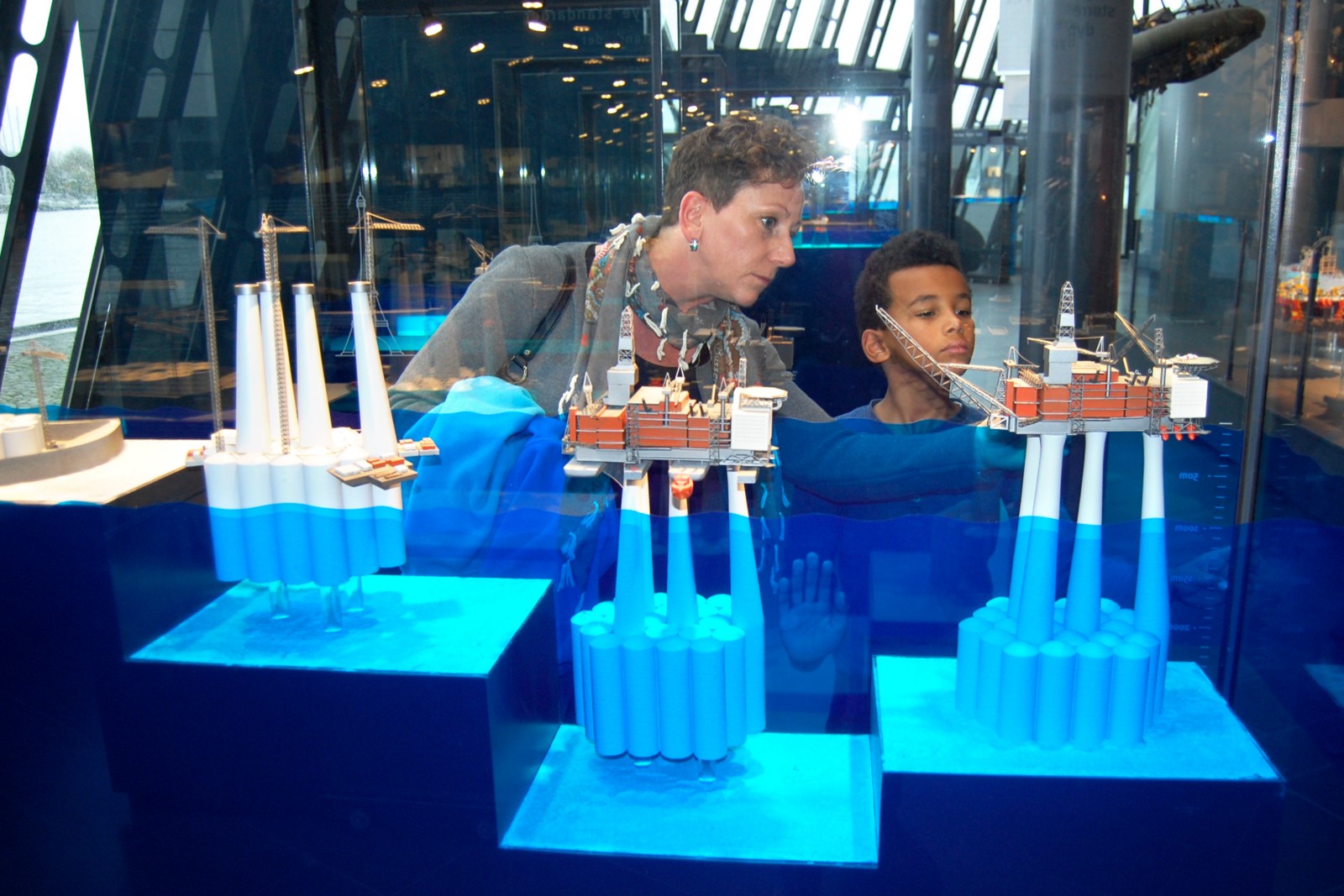
(Photo: Pierre-Henry Deshayes/AFP/Getty Images)
Norway has pledged that its energy mix will be carbon-neutral by 2030 — two decades ahead of the mid-century deadline for net-zero emissions that many believe is necessary. The Nordic country is already widely considered a climate leader, and 95 percent of the country’s electricity comes from renewable hydropower. In June, Norway committed to becoming the first nation to eliminate deforestation. Norwegian carbon taxes were adopted early — in the 1990s — and are some of the highest in the world.
Yet at the same time, so is the country’s rate of energy consumption per capita. The Organization for Economic Co-operation and Development has found that the exploitation of natural resources is the country’s main driver of economic growth. Indeed, Norway is Europe’s biggest oil and gas producer, the eighth-largest oil exporter in the world, and the third-biggest gas exporter; in 2014, oil and gas accounted for 45 percent of Norway’s exports, and the nation emitted more than 53 million tons of carbon dioxide. These factors undermine, in part, the country’s standing as a climate role model.
Another thing that troubles some observers: Norway’s plan to achieve carbon neutrality doesn’t involve cuts to oil and gas industry emissions, but rather relies on investment in carbon trading schemes abroad to offset inevitable emissions at home. Indeed, the country right now is expanding oil and gas production, issuing permits to companies to explore drilling options in regions like the Johan Castberg field, an arctic oilfield off the coast of Norway in the Barents Sea, estimated to contain between 400 and 600 million barrels of oil.
“You have to ask if they really believe in their own pledge and their own promises,” Klyve says of the expansion in Norway’s Arctic drilling plans. It could take decades to find deep-water deposits of fossil fuels — and build the necessary infrastructure to extract those fuels — which means that any new fossil-fuel investments today could lock Norway into higher carbon emissions down the road.
Fossil fuel investments may give Norway’s economy a boost for now, but eventually the nation’s economy could take a hit for its dependence on fossil-fuel extraction.
“We need to rapidly decarbonize the entire global economy and we need to do that by around mid-century,” Fransen says. “So one has to question whether investments in fossil-fuel infrastructure that have a lifespan longer than that are really compatible with those goals, or whether those types of investments could actually result in economic losses by having to be shut down before the end of their useful life.”
It’s also not at all clear that Norway can meet its pledges by depending so heavily on investments abroad. In 2008, after Norway announced fledgling plans to be carbon-neutral by 2030, the New York Times cited critics who argued that Norway’s plan was unsustainable; as the Times reported, “there are not enough environmental projects in poor countries to cancel out all the emissions of the developed world.” In June, after Norway’s parliament approved of the goal, no less a figure than the country’s climate minister Vidar Helgesen expressed skepticism over the proposal to use carbon offsets to meet net-zero emissions by 2030. “The reason why we’re not comfortable with this proposal,” he told the Guardian in June, “is frankly that the methods parliament is pointing to are currently not available and the only one that is available right now, won’t be after 2020.”
GUATEMALA: Where Adaptation Trumps Mitigation
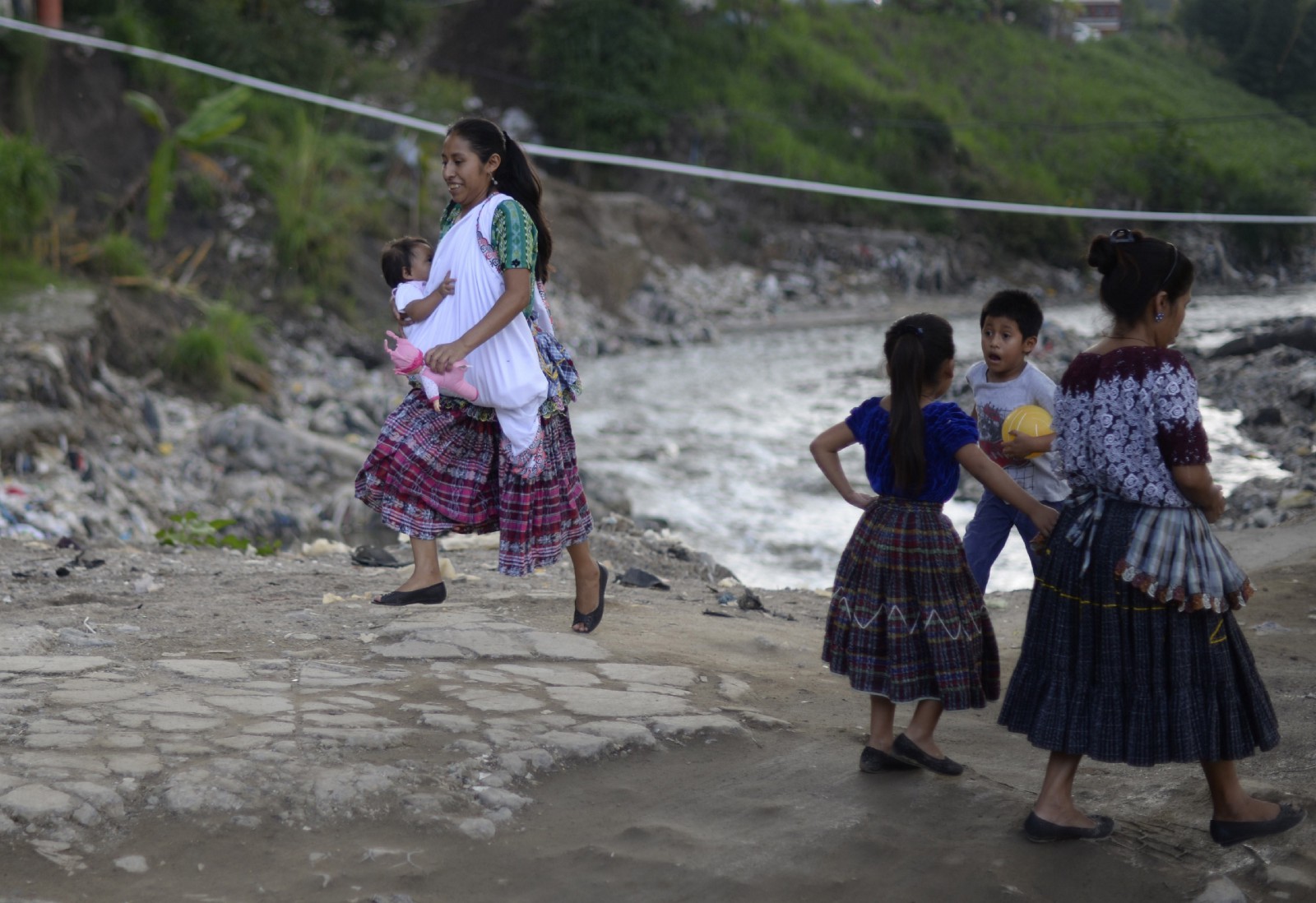
(Photo: Johan Ordoñez/AFP/Getty Images)
Guatemala’s climate plan is also highly dependent on other nations, but the similarities with Norway end there. The Central American country emits hardly anything at all, accounting for less that 0.1 percent of global emissions. The country has promised to reduce emissions by 11 percent below 2005 levels by 2030, and by as much as 22 percent if financial and technical support from richer countries prove forthcoming. And while much of the discussion around the Paris Agreement has centered on parties’ mitigation plans, adaptation is an even greater concern in places like Guatemala.
“It’s really important that we balance the push for reducing emissions with the funding for adaptation,” says Diana Liverman, director of the Institute of the Environment at the University of Arizona. “Even if we stop emitting now, we’re committed to warming and to sea level rise for decades. Even acting right now doesn’t stop the changes, and that’s why we’ve got to have funds for adaptation.”
Guatemala should be able to meet those 11 percent cuts on its own simply by reducing its reliance on fossil fuels from 40 percent of energy production to 20 percent, according to Edwin Castellanos López, a professor of environmental science at Guatemala City’s Universidad del Valle and a member of the Guatemalan delegation at COP21 in Paris. In 2013, the country passed a law creating the National Council for Climate Change, which was charged with developing the national plan for adaptation and mitigation, as well as a national fund for climate change that, starting next year, will be seeded with $2 million in domestic funds for climate action.
But by law, the majority of the fund — 80 percent — must go to adaptation, rather than mitigation. Most of the $2 million will likely go to local governments in need of water management systems. It’s a start, but it’s not nearly enough to address the adaptation needs of the climatically vulnerable country. Central America, a tapering slice of land pinched between the Pacific and Atlantic Oceans, actually behaves like any island: The climate is variable, as it always has been, but, in the last few decades, the country’s climate has grown ever-more unpredictable and extreme. The new millennium began with a decade of hurricanes and tropical storms that, coupled with the country’s socioeconomic conditions, wreaked havoc on the population, many of whom live in precarious locations — along rivers prone to flooding, for example, or steep ravines prone to landslides. “More than half the population live in poverty,” Castellanos says. “When you have half of your population under the poverty line, any of these big storms can really do a lot of harm.”
Eventually, the country’s climate fund will be configured to take on international funds as well. Guatemalan officials have their eyes on a cut of the $100 billion Green Climate Fund, established in principle at COP16 in Cancun, Mexico. But it’s unclear how much, if any, of those funds Guatemala will receive. “We, of course, are interested in being able to access those funds, but what we recognize is that, at the international level, it’s usually very competitive,” Castellanos says. Governmental turnover can be “traumatic” for Guatemala, according to Castellanos, undermining the country’s ability to develop the necessary proposals to receive money from the Green Climate Fund, especially when officials who don’t prioritize climate change take office. “[The proposal process] requires some minimum institutional infrastructure within the country and that is something that we are lacking,” he says. “Our ministry of the environment is the one that houses our climate change unit, but it’s a relatively small and weak unit.” Every four years when a new government takes office, a new director takes over, often slowing down or stopping the environmental initiatives that were begun by previous directors. “Ironically, what happens is that countries in the region that are stronger institutionally are able to access more of this funding.” Countries like Costa Rica, despite lower levels of poverty and vulnerability than Guatemala and most of Central America, Castellanos explains. “Costa Rica is usually very successful at selling itself as a country that is doing a lot of things in terms of climate change and therefore exacting more funding,” he says.
INDIA: Balancing Human Rights and the Environment in Coal Country
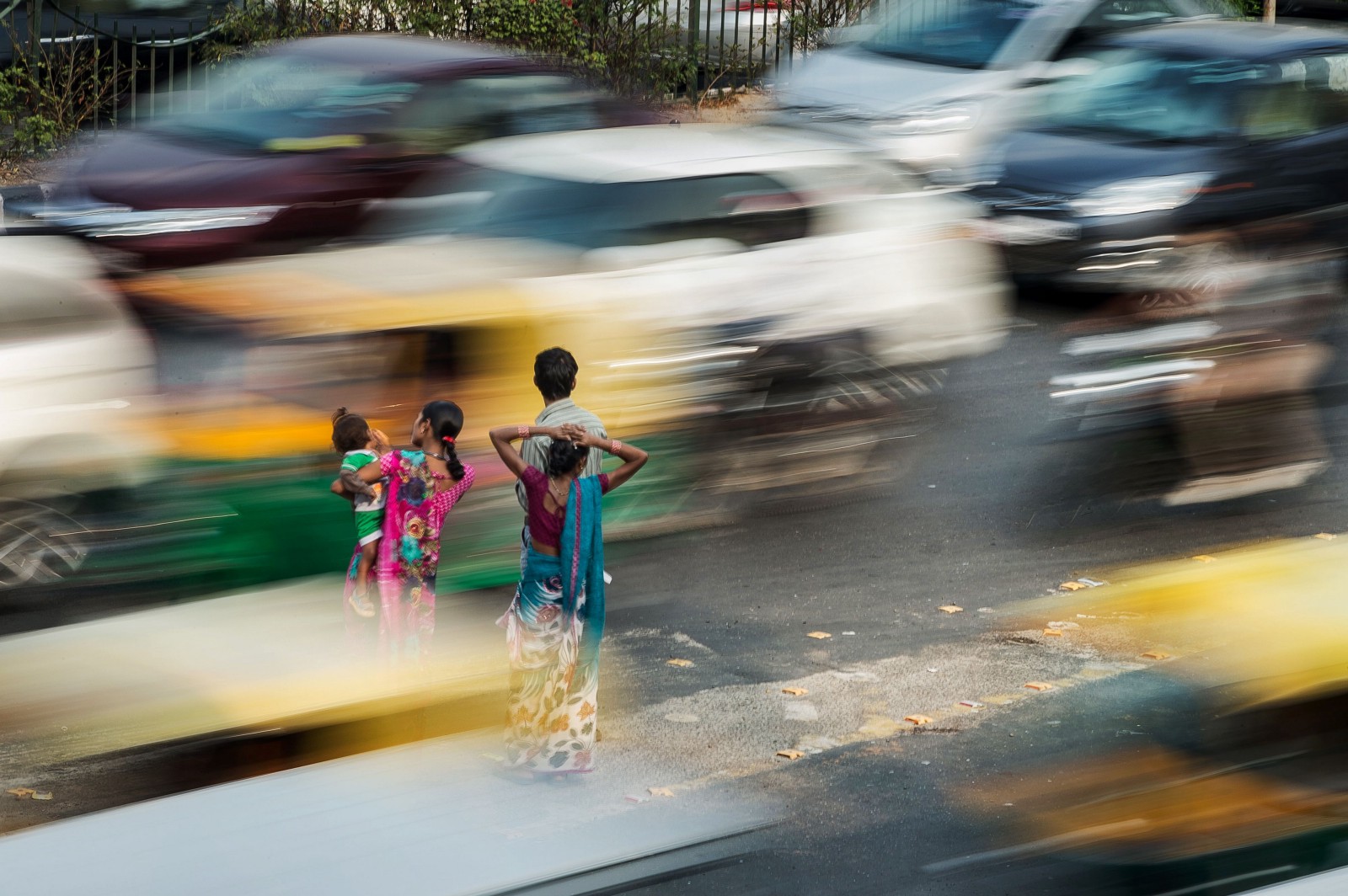
(Photo: Roberto Schmidt/AFP/Getty Images)
India shares some similarities with both Norway and Guatemala, as both a big-time emitter — the third largest in the world — and one of the most vulnerable to climate change. Rising sea levels threaten its coastlines, for example, while extreme weather threatens the country’s agriculture. India has pledged to increase its share of renewable energy to 40 percent and reduce emissions by at least 33 percent below 2005 levels by 2030 with support from other countries — financially, India expects to receive roughly $2.5 trillion for adaptation and mitigation through 2030. (Indeed, India refused to ratify the agreement until after the United States had done so, to ensure that developed, rich nations were first among those bound to the agreement.)
It’s difficult to evaluate the country’s emissions pledges based only on India’s INDC, which is light on specific numbers for both 2005 emissions and 2030 targets. But, according to the WRI, India could have established an even more ambitious emissions reduction target than what it proposed last year in Paris; just by meeting its renewable energy targets, and taking into account the inevitable increases in energy efficiency over time, India can easily meet its pledge. (Also unclear is how the nation will meet its goal of increasing forest cover enough to sequester between 2.3 and three billion tonnes of carbon dioxide.)
There’s reason to be optimistic about India’s clean energy goals. “India has announced year on year solar energy targets that are incredibly ambitious that they are on track to meet so far,” according to Taryn Fransen of the WRI. In 2014, the country was producing 34 gigawatts of renewable energy. India had previously promised to kick up its renewable power production to 175 gigawatts by 2022, just shy of the 200 gigawatts necessary to meet the 40 percent goal — a goal that should easily be met, given that the country’s renewable energy potential, according to a report from the Ministry of New and Renewable Energy, is 900 gigawatts.
But the country must balance the development needs of its massive population with the realities of the vulnerable global environment. About 363 million people live in poverty in India, and at least 304 million people live without electricity; moving away from coal puts the country’s development goals in jeopardy, while failing to do so imperils the environment.
“We are very clear that solar and wind is our first commitment, hydro and nuclear all of these non-carbon sources are what we will develop to the largest extent we can. What cannot be met by these will be met by coal,” Ajay Mathur, the director general of India’s Bureau of Energy, told the BBC last year.
Coal now accounts for about 60 percent of India’s power, and it’s not going anywhere, according to the INDC. “In order to secure reliable, adequate and affordable supply of electricity, coal will continue to dominate power generation in future,” the report states. The current government in India has taken steps to make solar energy more competitive with coal, however, by increasing taxes on coal and tightening emissions standards for coal-based plants.
“If you want a country to transition to — or take a leap rather — to a new energy, then that country needs to be supported,” says ActionAid’s Harjeet Singh. Climate justice — the idea that the richest nations that have benefited economically from decades of unregulated fossil fuel burning should kick back some of those financial benefits to developing countries that can’t use the same cheap options — is a recurring theme in India’s INDC, which quotes Mahatma Gandhi: “Earth has enough resources to meet people’s needs, but will never have enough to satisfy people’s greed.”
RUSSIA: Business as Usual for This Big-Time Emitter
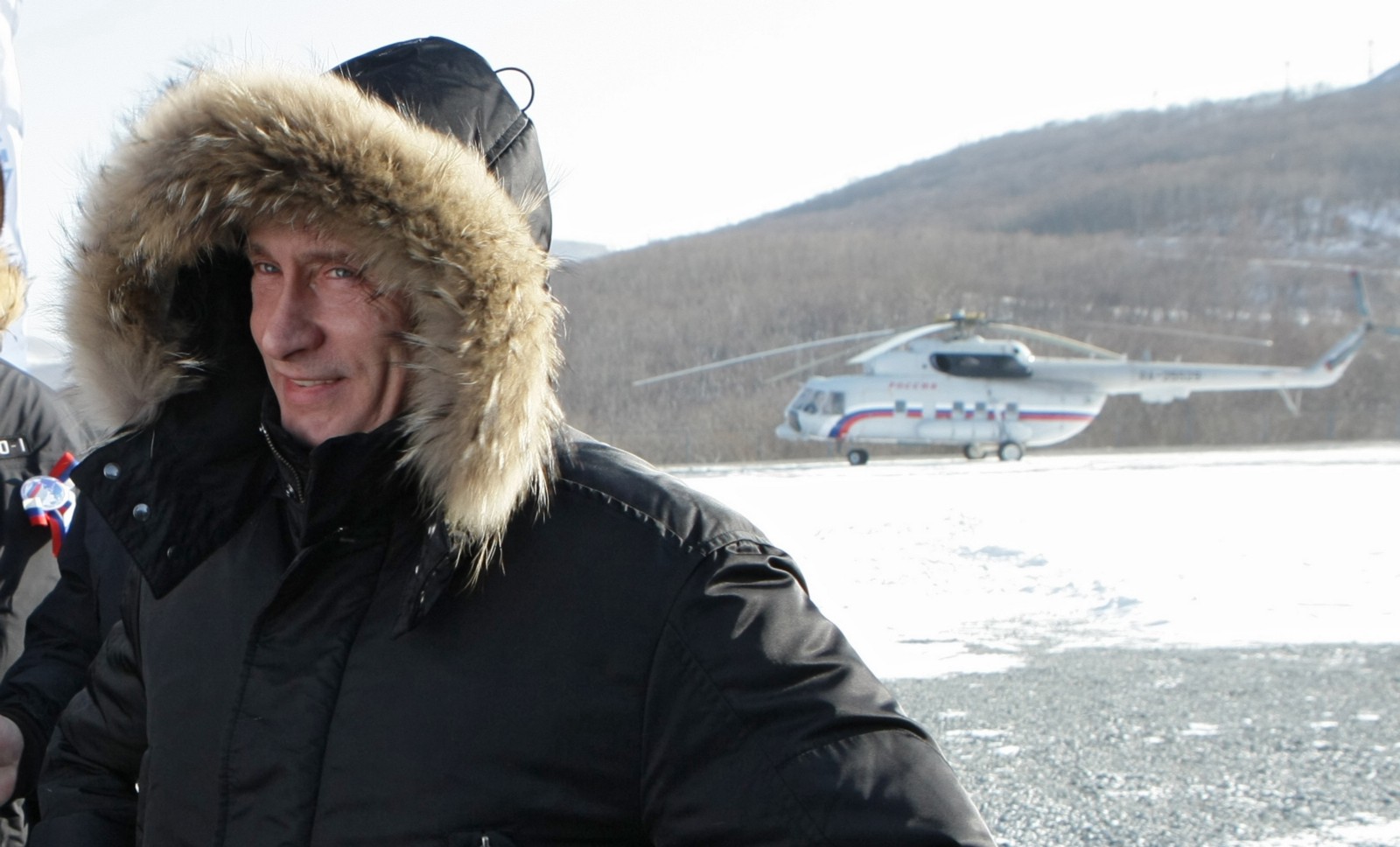
(Photo: Alexey Nikolsky/AFP/Getty Images)
Russia has yet to ratify the Paris Agreement, but its INDC states that the country will reduce greenhouse gas emissions by 25 to 30 percent below 1990 levels by 2030. But there’s a problem with their math: Since emissions were 50 percent higher in 1990 (before the collapse of the Soviet Union) than in 2012, a 25 to 30 percent reduction relative to 1990 would be equal to a 40 to 50 percent increase over 2012 levels by 2030, as the WRI pointed out last year. In other words, Russia’s commitments are flexible enough to allow the country to continue to increase emissions over the next 14 years. Alexey Kokorin, head of the Climate and Energy program at WWF Russia, told the New York Times that the plan is “very close to business as usual.”
Another wrinkle is that Russia is home to 70 percent of the world’s boreal forests, providing the country with a massive carbon sink — which takes some of the pressure off of other sectors to reduce emissions. In fact, if the carbon sequestered by the country’s forest cover is included in emissions calculations, Russia would already meet the lower limits of its reduction pledge, Matti Kahra, a climate negotiator from Finland, tweeted last year. It’s unlikely that Russian emissions will peak by 2020 — the year experts agree emissions will need to peak in most regions of the world to limit warming to two degrees Celsius. If Russian emissions continue to increase after 2020, the world will surely fall short of that goal, unless other countries are able to recoup the difference. The Climate Action Tracker has rated Russia’s commitment “inadequate,” meaning that “the Russian commitment is not in line with interpretations of a ‘fair’ approach to reach a 2°C pathway.”
Russia’s economy is still highly dependent on fossil fuels, but it doesn’t need to be, according to George Safonov, an environmental economist at the National Research University’s Higher School of Economics in Moscow. “Being rich in fossil fuels, Russia is also rich in renewable energy sources,” he wrote in Law360. The potential energy from solar, wind, geothermal, tidal, and biomass sources is 25 times greater than the energy produced today, Safonov explains, and yet renewable energy makes up less than 1 percent of Russia’s energy mix.
Moving away from oil and gas could help stabilize Russia’s financial system, which took a significant hit as the price of oil has dropped since 2014. Elvira Nabiullina, the head of the Central Bank of Russia, has said that diversifying the country’s energy mix is the best strategy to reduce the ruble’s volatility. Luckily there is less political or ideological opposition to climate change action in Russia than in some other developed countries, which means as long as the cost benefit analysis of climate change plans comes down in favor of climate action, Russia is likely to act.
The Other Stragglers (Nations That Have Yet to Ratify the Agreement)
Countries like Russia that have yet to ratify the Paris Agreement are in an interesting position. Now that the agreement has entered into force, discussions and decisions by the parties about how to move forward will begin in Marrakech, at the first meeting of the Parties to the Paris Agreement (CMA1). The CMA needs to establish guidelines for transparency, ambition-raising procedures, and compliance — all the issues that need to be decided before leaders steer the implementation of the agreement. Everyone is invited to the party, but only those countries that have ratified the agreement will have decision-making authority.
Obviously, that’s not ideal for the countries that haven’t yet been able to push the agreement through their domestic channels for ratification. But at the pre-COP Ministerial Meeting in mid-October, Salaheddine Mezouar, Morocco’s minister of foreign affairs and cooperation and the president of COP22, had some comforting words for the stragglers. “CMA1 in Marrakech will be an inclusive moment,” Mezouar said.
There are several ways this could play out that keep everyone involved in the process regardless of ratification status. The WRI has laid all of them out in detail already, but the most likely scenario seems to be that the discussion will begin in Marrakech, and remain open in a suspended state for future COPs until all parties have had a chance to participate. How many decisions will be made in the meantime, and whether or not the suspension period would be finite or indefinite, remains to be seen.
Between now and 2020, when the Paris Agreement truly enters into force, nations will be working out how to implement plans that meet the promises they’ve made. “While we have INDCs on the table, we all know these INDCs are not sufficient to keep the people and the planet safe,” Singh says. The next three years will be critical to the successful implementation of the Paris Agreement, according to Singh.
“We have a window of three years to make sure that our ambition goes much higher, to have the chance of keeping the temperature rise below 1.5 degrees,” he says. “So, on the one hand, we need to celebrate the momentum that was behind bringing the Paris Agreement into force so early, and we need to work on the modalities and rule-making for the Paris Agreement. On the other hand we need to make sure that the pre-2020 action should not get compromised in all the fanfare of the Paris Agreement.”




